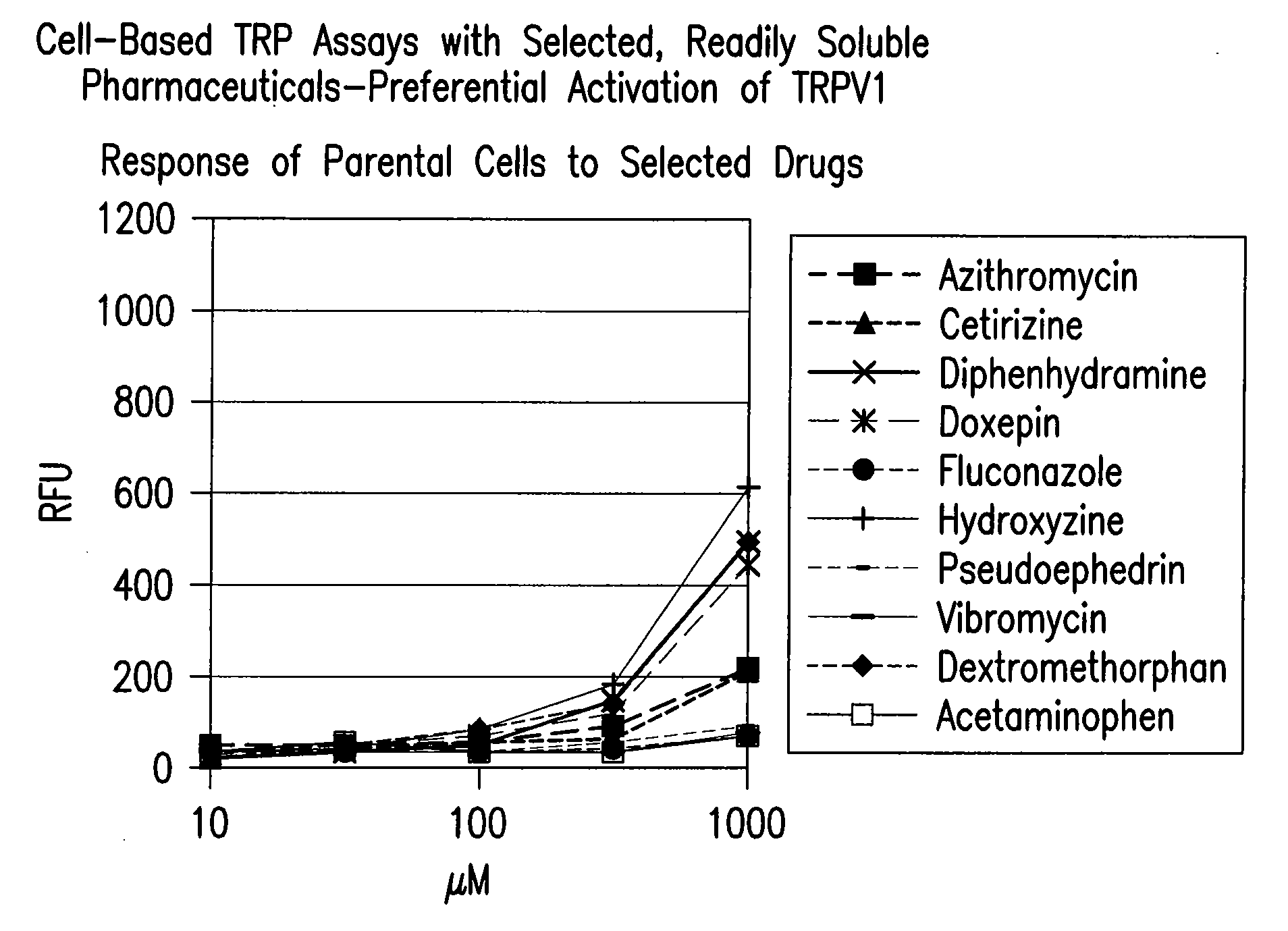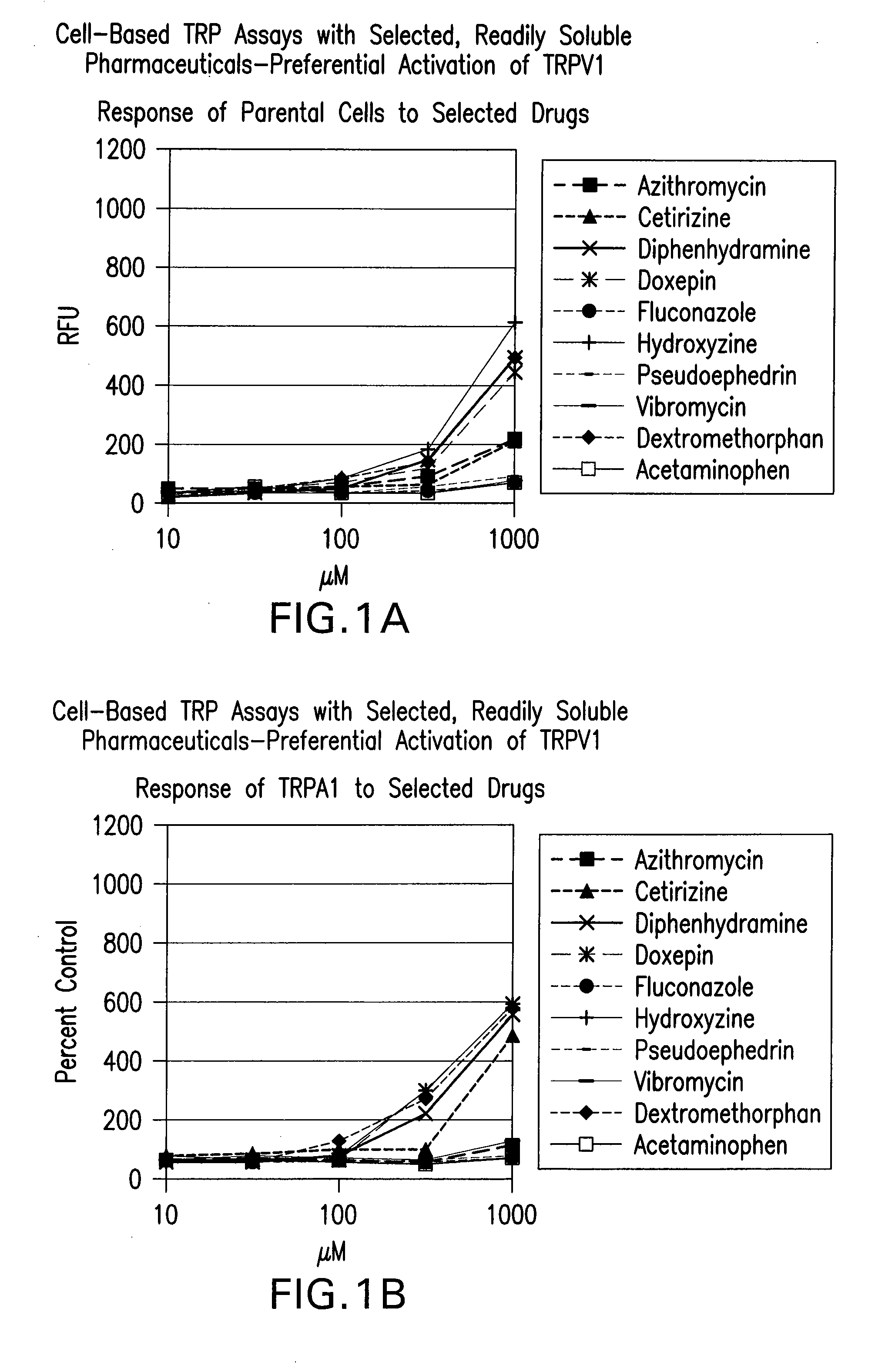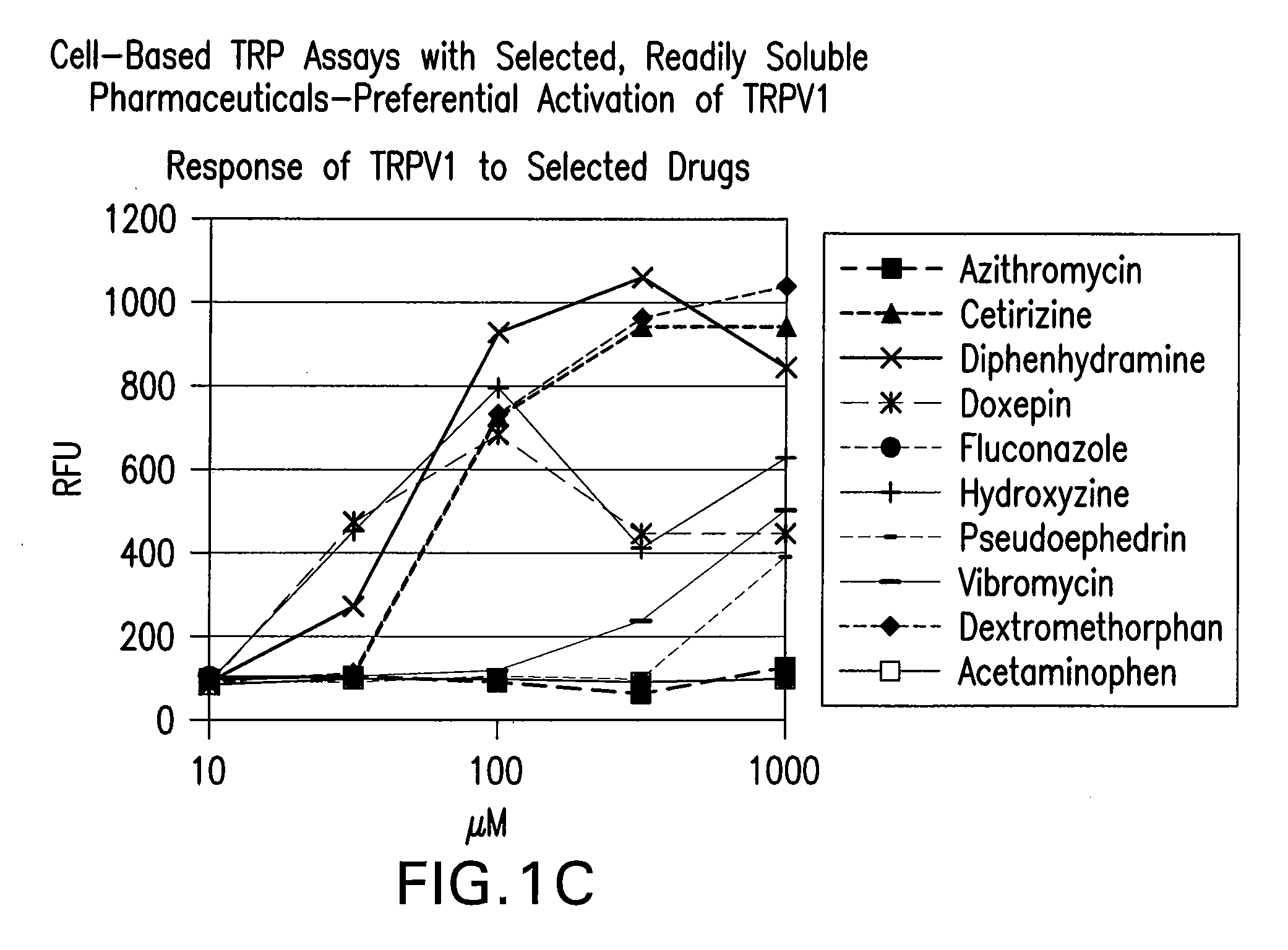Trpv1 antagonists and uses thereof
a technology of trpv1 and antagonists, which is applied in the field of trpv1 antagonists, can solve the problems of preventing rapid oral absorption of pharmaceuticals, affecting the palatability of food and its intake, and many active pharmaceutical ingredients of medicines produce undesirable tastes
- Summary
- Abstract
- Description
- Claims
- Application Information
AI Technical Summary
Benefits of technology
Problems solved by technology
Method used
Image
Examples
example 1
Activities of Selected Compounds
[0599]A cell-based fluorescence assay was performed using HEK293 cells to determine
[0600]TRPV1 selectivity of readily soluble drugs. Cells either remained untransfected (Parental) in Panel A, transfected with a vector encoding human TRPA1 (TRPA1) in Panel B, or transfected with a vector encoding human TRPV1 (TRPV1) in Panel C. Parental cells and TRPA1 cells served as negative controls. All cells were incubated with 100 μM of readily soluble drugs. Cell membrane depolarization was measured in relative fluorescence units (RFU) through a coupled fluorescence emission scheme. FIG. 1. shows cetirizine, diphenhydramine, doxepin, hydroxyzine, and dextromethorphan eliciting greater membrane depolarization in TRPV1 cells as measured in RFU, compared to the results observed in Parental and TRPA1 cells. Panel D shows the response of known agonists on 3 TRP channels.
example 2
Activity of Selected TRPV1 Antagonist in HEK293 Cells
[0601]The activity of a TRPV1 antagonist was monitored over time in a another cell-based fluorescence assay. HEK293 cells were transfected with a vector encoding human TRPV1. Using the FLIPR system, the cellular membrane potential coupled to fluorescence emissions is measured in RFU over time. Panel A of FIG. 2 shows that in the first 180 seconds, no significant change in measured fluorescence occurs. Therefore no significant membrane depolarization occurs with the application of either the Vehicle or the TRPV1 antagonist, BCTC. When the transfected cells are pre-incubated with just the Vehicle, a fluorescence change is recorded upon capsaicin application. Therefore, capsaicin as a TRPV1 agonist opens the TRPV1 cation channel to allow for ion movement across the cell membrane and for membrane depolarization to occur. When the transfected cells are pre-incubated with 300 nM BCTC, no significant fluorescence change is recorded upon ...
example 3
Activity of Selected TRPV1 Antagonist in HEK293 Cells
[0602]A cell-based fluorescence assay was performed using HEK293 cells to observe inhibition of selected, readily soluble drugs by a known TRPV1 antagonist (FIG. 3). Cells were transfected with a vector encoding human TRPV1. Subsequently, the transfected cells were incubated with 100 μM of cetirizine, diphenhydramine, doxepin, hydroxyzine or dextromethorphan. As in Example 1, these compounds produce cell membrane depolarization observed through a coupled fluorescence reaction. The measured cellular response in RFU to these compounds is used as a baseline for determining the effects of TRPV1 antagonists. Upon application of 300 nM of an identified TRPV1 antagonist, BCTC (+BCTC), the total RFU counts drop significantly with respect to the baseline cellular response. The observations in FIG. 2 indicate that the TRPV1 antagonist, BCTC, is capable of blocking cell membrane depolarization produced by the application of TRPV1 activators....
PUM
| Property | Measurement | Unit |
|---|---|---|
| Fraction | aaaaa | aaaaa |
| Fraction | aaaaa | aaaaa |
| Fraction | aaaaa | aaaaa |
Abstract
Description
Claims
Application Information
 Login to View More
Login to View More - R&D
- Intellectual Property
- Life Sciences
- Materials
- Tech Scout
- Unparalleled Data Quality
- Higher Quality Content
- 60% Fewer Hallucinations
Browse by: Latest US Patents, China's latest patents, Technical Efficacy Thesaurus, Application Domain, Technology Topic, Popular Technical Reports.
© 2025 PatSnap. All rights reserved.Legal|Privacy policy|Modern Slavery Act Transparency Statement|Sitemap|About US| Contact US: help@patsnap.com



